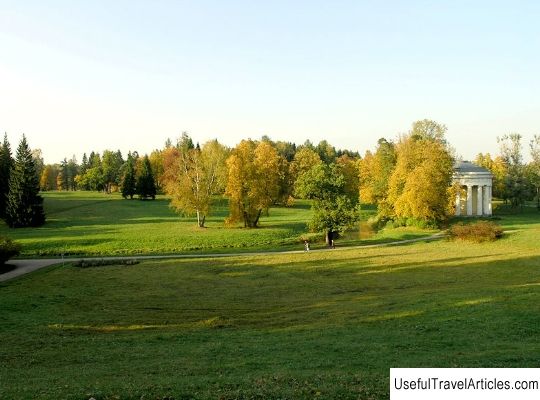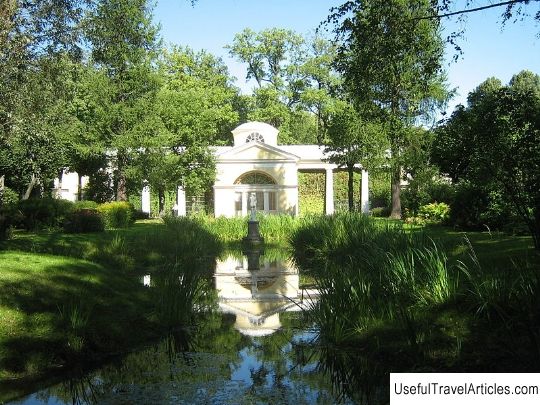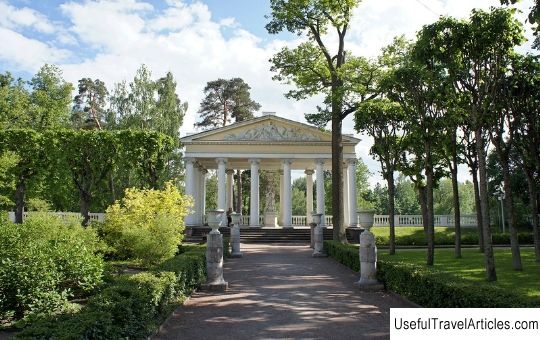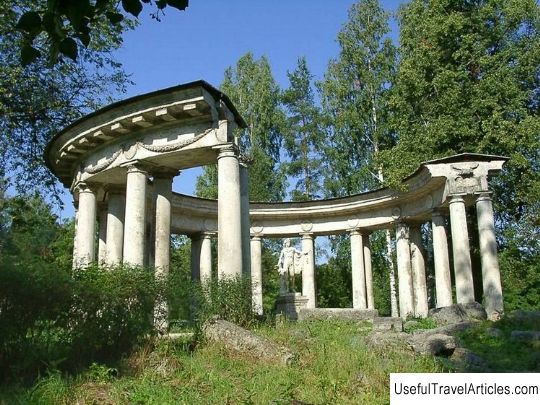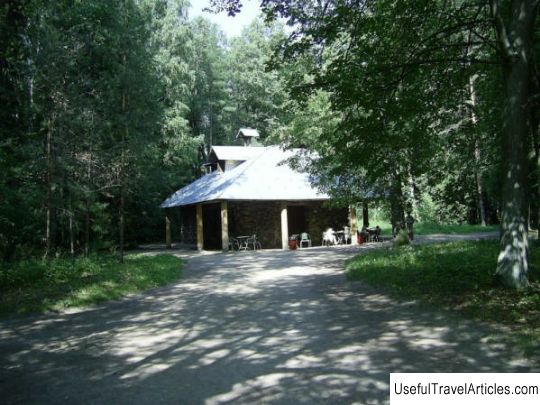Temple of Friendship in Pavlovsky Park description and photos - Russia - St. Petersburg: Pavlovsk
Rating: 7,8/10 (1456 votes) Temple of Friendship in Pavlovsky Park description and photos - Russia - St. Petersburg: Pavlovsk. Detailed information about the attraction. Description, photos and a map showing the nearest significant objects. Photo and descriptionThe Temple of Friendship is the very first work of Charles Cameron in Pavlovsky Park. When the architect was considering the plan for the park, he had already identified the location for this structure. The archive of the Pavlovsk Palace Museum contains the project of the Temple of Friendship. It features a section, 2 facade options, a plan signed by Charles Cameron, and working drawings. We also managed to save the estimate for construction work drawn up by Grigory Pilnikov (architect, worked under Cameron). At the beginning of June 1780, the estimate was approved, and the pavilion was soon laid. The Temple of Friendship looks like an antique temple-rotunda without windows, with a blank outer wall, with a first oak door, surrounded by a ring of 16 columns Greco-Doric order. The Temple of Friendship was conceived by the young grand-ducal couple as a reciprocal gift to Catherine II for the lands they donated. The pavilion was dedicated to her. Above the entrance, they decided to write in gold letters: "Love, respect and devotion of the first owners of Pavlovsk dedicated this temple to the donor of this piece of land." But politics was destined to intervene. In the summer of 1780, the foundation stone of the temple took place. The ceremony was attended by the Austrian Emperor Joseph II. After the solemn event, after assurances of friendship, it was inconvenient to indicate the name to whom the dedication was initially conceived, even if it was the empress herself. Therefore, above the entrance to the Temple of Friendship, the inscription flaunts: "Love, respect and gratitude dedicated." And in the pavilion itself, with the help of allegories and symbols, it was possible to understand to whom it was dedicated. Before the war, the inscription disappeared. In the museum, you can see only one surviving letter "ь". In 1782, interior decoration began. The work was supervised by the architect Pilnikov. K. Mikhailov carried out plastering work, the painting of the building was done by the painter I. Rudolf. The molding in the form of a frieze with dolphins, sculptural roses, wreaths of grape vines was cast by the master Bernasconi. Carved furniture: 16 banquettes, decorated with a frieze of olive wreaths and myrtle branches, with legs in the form of torches of love, made by the sculptor-carver Charlemagne. The Temple of Friendship is filled with allegories and symbols. The outer walls are decorated from above with 16 stucco medallions with sculptural compositions (models by J.D. Rachet, molder Bernasconi). There are 4 repeating allegorical plots on them: "Minerva-Victoria", "Presentation of a deed of gift to the heir", "Generosity" and "Justice". In a niche opposite the entrance was a marble statue of the goddess of wisdom Minerva, with facial features reminiscent of Empress Catherine II. The sculpture was an explanation to whom the Temple of Friendship was dedicated. In 1792, it was replaced with a plaster statue of the Empress in the image of Cybele-Ceres (work of J. D. Rachet). The Temple of Friendship has blank walls, there are no windows. Light penetrated through a round glazed hole located in the center of the dome. Fearing that it would be dark here, Cameron wrote a special magnifying glass from England. In the summertime, the pavilion is always light. The walls of the rotunda pavilion are built of bricks and plastered. At first they were light gray or even white. They were later painted yellow. Undoubtedly, The Temple of Friendship is one of the best architectural buildings of the Pavlovsky Park ensemble. Charles Cameron chose an ideal place for him, on the banks of the Slavyanka River. The pavilion can be admired from different vantage points: it opens either partially or entirely. From a distance it seems small and airy, from a distance it looks monumental. Therefore, it is no coincidence that an observation deck was built in the park. A wonderful picture opened before the viewer, in which the main character was the Temple of Friendship. Maples and oaks, weeping willows and spruces planted around the pavilion became a natural background for the pavilion. At different times of the year, different colors of their crowns ideally emphasize the beauty of this architectural structure.                 We also recommend reading Chinese Museum and Temple description and photos - Australia: Darwin Topic: Temple of Friendship in Pavlovsky Park description and photos - Russia - St. Petersburg: Pavlovsk. |
